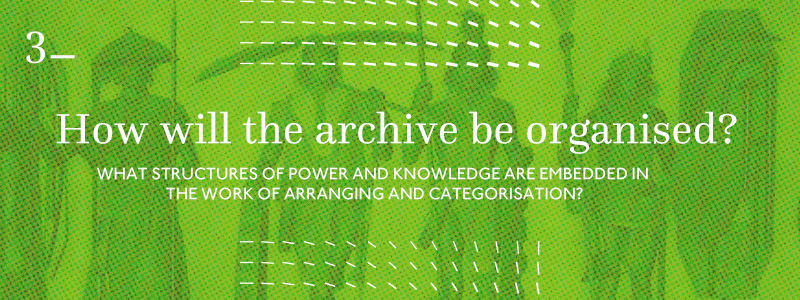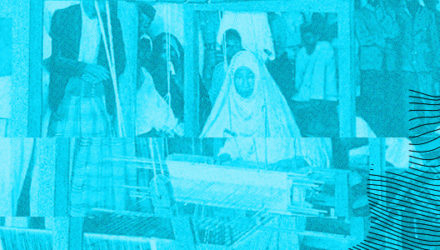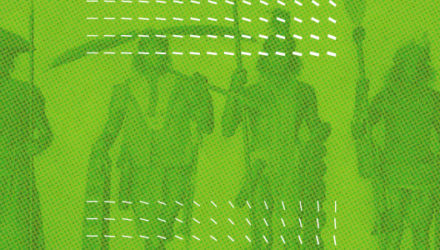
Once you have decided what kind of archive you want to build, you need to next decide how you’re going to go about collecting and organising it.
An archive is distinctive as an arrangement of artefacts, rather than just a pile of things. How will your archive be organised? The ways in which we choose to organise and categorise the collection of things tells particular stories about how certain things are valued.
For example, when you fill in a form and it asks you about your race, it signals that this is an important container of social life. When it continues to only provide you with 4 options, it tells you that these are the only forms of diversity that matter.
The “rules” of categorisation also point to the kinds of institutions that are seen as important in verifying whether something is meaningful or not.

For example, a British photographer in the late 1800s designed a body measurement system to demonstrate a kind of “objective” pursuit of cataloguing different races – hiding colonialism and racism behind the idea of scientific enquiry.
The Wikipedia community of contributors have been debating on the inclusion of oral history in their strict rules on citation which have followed the logic of academia, that in turn, tends to privilege those who are able to participate in this institution of knowledge production.
Archives such as Pusat Sejarah Rakyat on the other hand, centres people’s oral histories as the most important source and site of collective meaning making and truth-telling.
3a. What to collect?
- Is there a subject matter focus of the archive? (indigenous peoples’ histories/ political jokes/ Peranakan music)
- What kind of material are you collecting? (songs/ posters/ receipts/ paintings)
- What time period does the archive cover? Does it matter? (20th century/ 1990s/ the year 2020)
- How and where will you acquire them? (family collection/ flea market purchase/ donation/ shared)
3b. How to organise?
- How will your archive be organised? By topic? Chronology? Medium? Something else?
- What kinds of keywords or categories will you create?
- What is the journey or story that is told about your archive by way of accessing them through how your archive is organised?
Inventory
An inventory is, put simply, a table of materials. It allows us to know exactly what we have, and allows us to retrieve materials in a consistent manner. But there is no right way to do inventory: consistency is far more important.
This is a standard template you may adapt, change or disrupt for your own purposes. Simplified table template
- Title: Refers to the name given to the item. It may be transcribed from the item itself (book title/photograph caption/item name/etc.). Frequently, items will not have a formal title and a title needs to be supplied.
- Creator: The primary person or entity responsible for the creation of the item.
- Date: Record dates of creation, record-keeping activity, publication, or broadcast as appropriate to the item being described.
- Language: Creator-supplied language of the item described.
- Location: Place(s) relevant to the item, including location of creation, dissemination etc.
- Item type: The general type of content of the item, eg a sketch, a photograph, a Tiktok video, a magazine
- Dimension: The measurements of the original item
- Medium: The materials of which the item is composed
- Subject: A tag or keyword that describes the object, for search purposes.
- Notes: Description of the item, the why and how of the item’s creation.
Inventories open up the opportunity to tell object stories: the metadata (i.e. the information about your objects) can also be how people understand the objects in your archive, and their stories.
DIY ARCHIVE KIT
01 WHAT IS AN ARCHIVE?
What does or doesn’t count as an archive?
02 WHY ARCHIVE?
What are the politics of memory?
03 HOW WILL THE ARCHIVE BE ORGANISED?
What structures of power and knowledge are embedded in the work of arranging and categorisation?
04 SHARING YOUR ARCHIVE
Who has access to your archive? How would you like others to interact with your archive?
FURTHER RESOURCES
List of resources and further readings.









